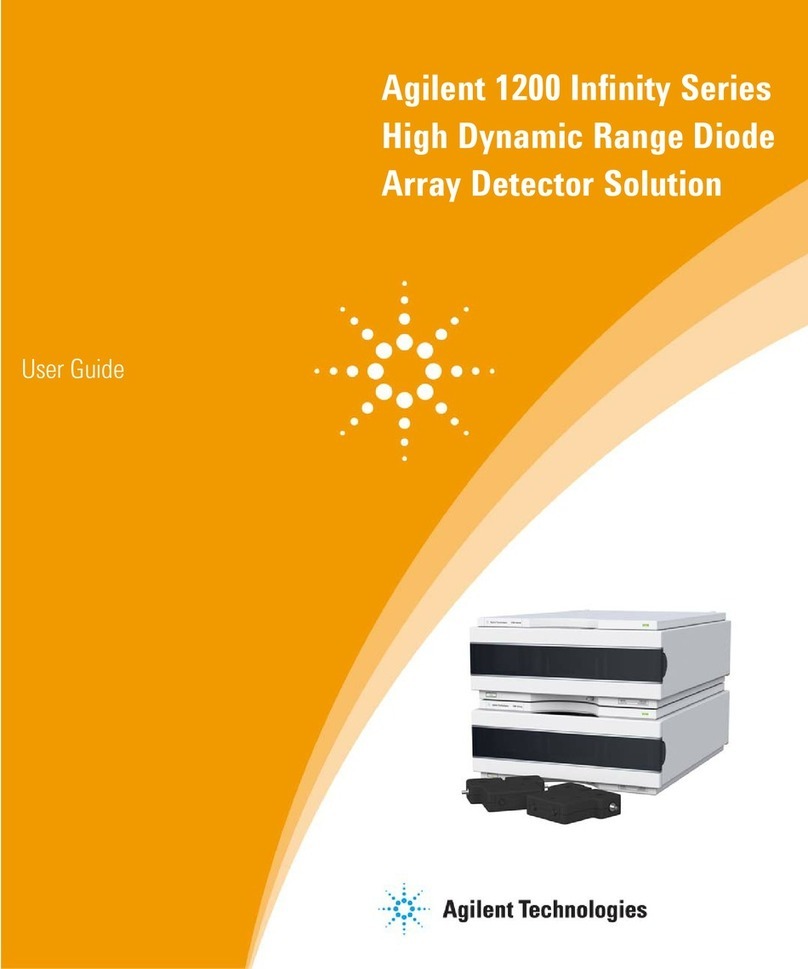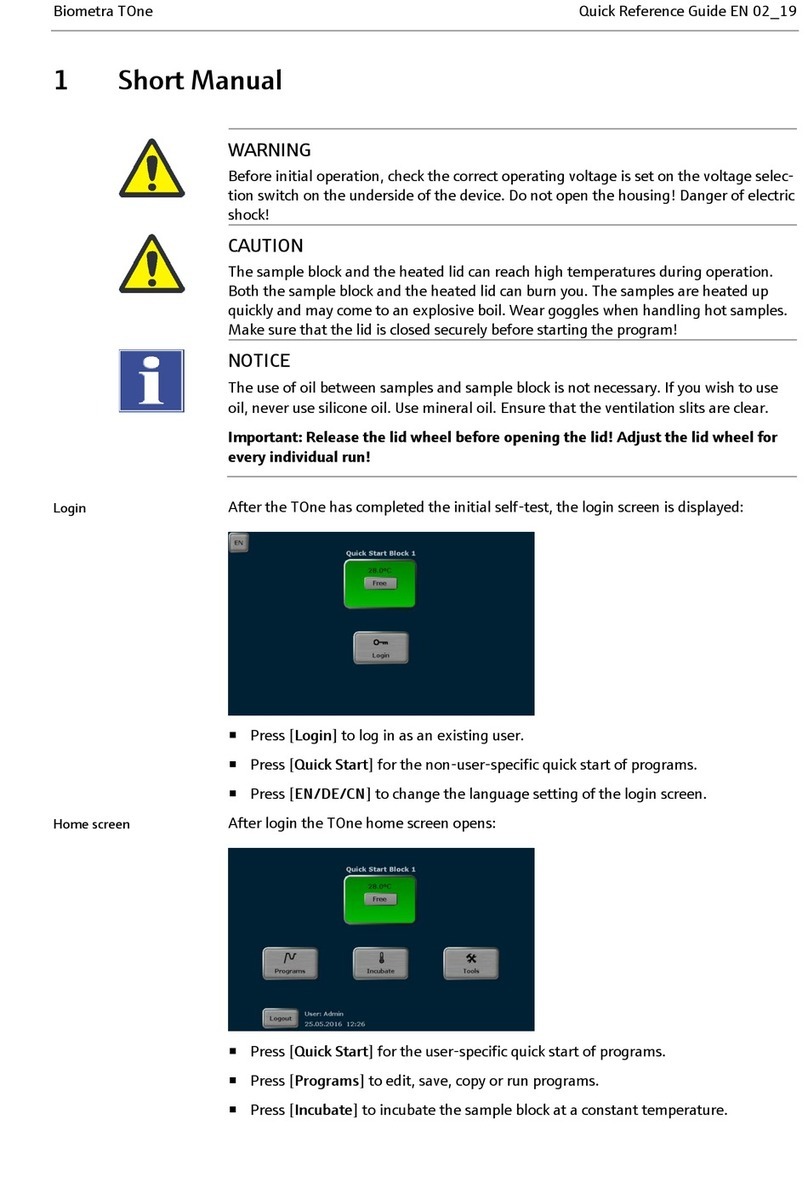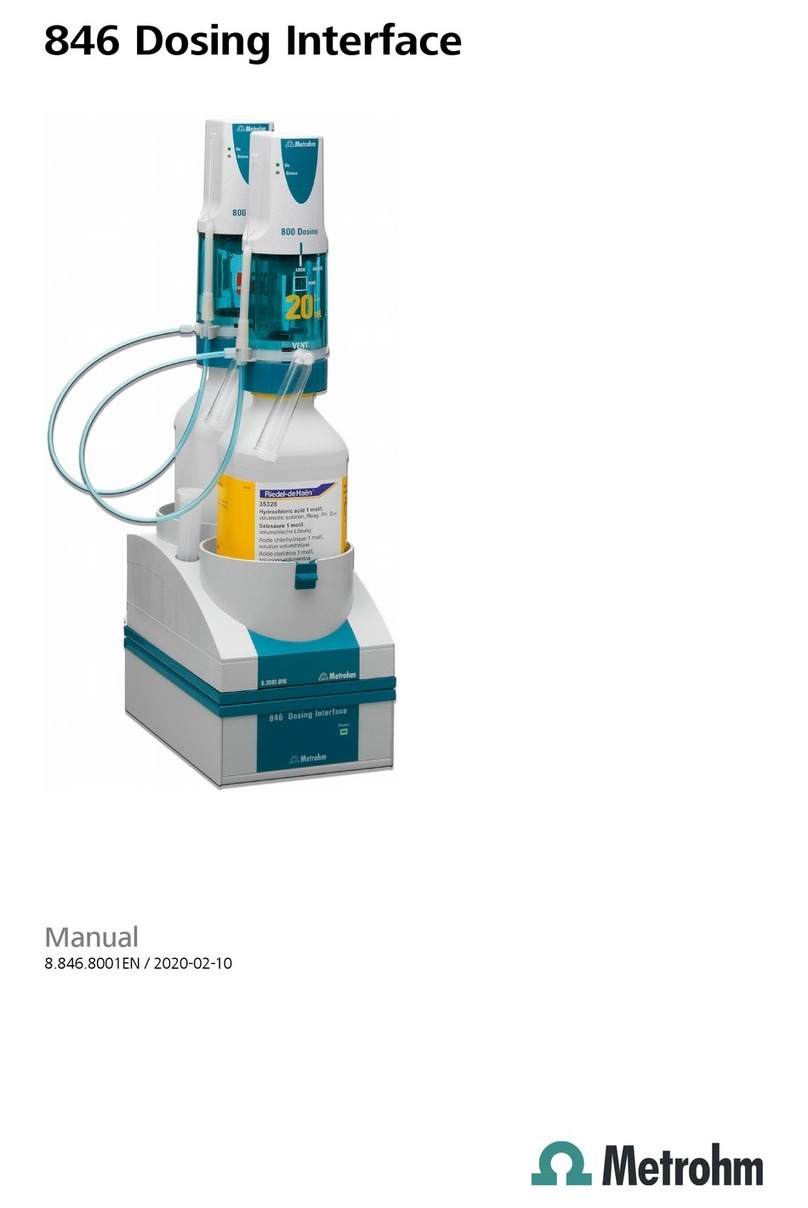Dickey-John Instalab 600 Series User manual


Instalab Series 600 Analyzers
11001-1360-200512
i
TABLE OF CONTENTS
Safety Notices ......................................................................................................1
Introduction ..........................................................................................................3
Models ...............................................................................................................................4
Features .............................................................................................................................4
Optional Accessories .........................................................................................................5
Specifications .....................................................................................................................5
Theory Of Operation ..........................................................................................................7
Installation ............................................................................................................9
Printer Connection .............................................................................................................9
Serial Port Configuration ..................................................................................................10
Connector Contacts .........................................................................................................10
Calibration ..........................................................................................................13
Gathering A Sample Set ..................................................................................................13
Samples Required For Calibration ...................................................................................13
Sample Collection ............................................................................................................13
Product Characteristics ....................................................................................................14
Sample Moisture Content ................................................................................................14
Sample Storage ...............................................................................................................15
Developing Calibrations ...................................................................................................15
Regression Data Collection .............................................................................................16
Developing Calibrations With Computer And Regression Program .................................17
Sample Preparation ...........................................................................................19
Grinding Samples ............................................................................................................19
Mixing Samples ...............................................................................................................19
Loading Standard Sample Cup (Dry Powder Samples) ..................................................19

Instalab Series 600 Analyzers
11001-1360-200512
ii
TABLE OF CONTENTS
Operation ........................................................................................................... 23
Operator Controls ............................................................................................................ 23
Basic Operating Concepts ............................................................................................... 27
Mode Selection ................................................................................................................ 30
Analyzing Samples For Data Collection - Modes 1.0, 1.1, 1.2, and 1.3 .......................... 32
Calibration Entry - Mode 2 ............................................................................................... 33
Calibration Storage .......................................................................................................... 34
Calibration Modification And Deletion - Mode 2 .............................................................. 35
Product Name Assignment .............................................................................................. 36
Constituent Number Assignment ..................................................................................... 40
Printing Products And Constituents With Stored Calibrations - Mode 2.1 ....................... 41
Printing User Programmable Product Names - Mode 2.2 ............................................... 41
Printing Programmable Constituent Names - Mode 2.3 .................................................. 42
Printing Product Name Assignments - Mode 2.4 ............................................................. 43
Collecting Reference Or Raw Sample Data - Mode 3 ..................................................... 43
Testing Display, Printer, And Drawer Operation - Mode 3.5 ........................................... 44
Continuous Reference Data Collection - Mode 3.6 ......................................................... 45
Bias Adjustment ............................................................................................................... 45
Display Resolution Modification - Mode 4 ....................................................................... 46
Reference Log Sequencing Selection - Mode 4.1 ........................................................... 47
Entering and Storing Machine Title - Mode 6 .................................................................. 48
Running Reference Logs And Base Gain Settings - Mode 8 .......................................... 49
Disabling Printer Handshaking - Mode 9 ......................................................................... 50
Enabling Printer Handshaking - Mode 9.3 ....................................................................... 50
Date Entry - Mode -1 ....................................................................................................... 50
Troubleshooting ................................................................................................ 51
Maintenance ....................................................................................................... 55
Checking Air Filter ...........................................................................................................55
Cleaning Reference Disk And Sample Drawer ................................................................ 55
Cleaning Aperture Glass ................................................................................................. 56
Fuse Replacement .......................................................................................................... 57
Appendix ............................................................................................................. 59

OPERATOR’S MANUAL
Instalab 600 Series Analyzers
11001-1360-200512
1
SAFETY NOTICES
Safety notices are one of the primary ways to call attention to potential
hazards.
This Safety Alert Symbol identifies important
safety messages in this manual. When you see
this symbol, carefully read the message that
follows. Be alert to the possibility of personal
injury or death.
Use of the word WARNING indicates a potentially hazardous
situation which, if not avoided, could result in death or serious
injury.
Use of the word CAUTION with the Safety Alert Symbol indicates a
potentially hazardous situation which, if not avoided, may result in
minor or moderate injury.
Use of the word CAUTION without the safety alert symbol
indicates a potentially hazardous situation which, if not avoided,
may result in equipment damage.
!

OPERATOR’S MANUAL
Instalab 600 Series Analyzers
11001-1360-200512
2 SAFETY NOTICES

OPERATOR’S MANUAL
Instalab 600 Series Analyzers
11001-1360-200512
INTRODUCTION 3
INTRODUCTION
Quality in design and construction of the Instalab 600 Series ensures the
most reliable Near Infrared Reflectance (NIR) results available. The rotating
sample cup virtually eliminates the problems associated with sample
non-homogeneity - studies indicate up to 3 times better than integrating
sphere and other types of data collection technology. Reliability is further
enhanced by a reference design that incorporates the entire optical system.
An exclusive DICKEY-john feature, Optigain®, enables the user to adjust
the gain for low-reflectance samples. Another exclusive, thermoelectrically
cooled detectors, maximizes both sensitivity and dynamic range.
The Instalab 600 Series is designed and built for trouble-free operation in
virtually any environment - from the lab to the production line. The optics
chamber is completely sealed and thermally isolated. An integrated,
computerized self-test mode continuously monitors instrument performance
and pinpoints errors. Calibrations are stored in a non-volatile EEPROM
system that doesn’t rely on battery backup. Automatic self-test procedures
verify correct operation after each sample.
The unique sampling system makes the Instalab adaptable to nearly any
solid or semi-solid substance. Replaceable filters allow the instrument to be
adapted, easily and economically, for nearly any substance and any
constituent, making the Instalab 600 Series ideally suited for both
development work and for dedicated instrument use. The replaceable filter
feature also allows any change in filter configuration developed by a
research scanning instrument to be easily implemented in satellite Instalabs
for networking.
Near Infrared (NIR) technology offers an important alternative to wet
chemistry, an alternative with a world of applications: control of incoming
raw materials, process control, research, and many more. Virtually any solid
or semi-solid material may be analyzed by the DICKEY-john NIR method.
With sufficient calibration data, the Instalab will provide accuracy
comparable to laboratory results. In fact, in daily operation, the Instalab is
much more repeatable and precise than typical laboratory testing since
operator technique is less crucial and instrument error is minimal.

OPERATOR’S MANUAL
Instalab 600 Series Analyzers
11001-1360-200512
4 INTRODUCTION
Figure 1
Instalab Unit
MODELS
•MODEL 660A utilizes the universally accepted standard set of six
wavelengths commonly used to measure moisture, protein, starch, oil,
etc. in food products.
•MODEL 610FGA includes ten selected filters designed specifically for
use in measuring properties in feed and grain.
•MODEL 610SBA includes ten selected filters designed specifically for
use in measuring properties in soybeans, wheat, and corn.
•MODEL 610MCA includes the ten most commonly used filters for NIR
applications in food, feed, grain, meat, and dairy applications.
•MODEL 610A CUSTOM permits the user to choose four specific filters
from a selection of over 50 available wavelengths to supplement the
six standard filters, allowing dedicated calibration for special product
applications.
FEATURES
Features of the Instalab 600 Series Analyzer features include:
• Memory capabilities allow storage for 52 calibrations.
• Selectable moisture basis constituent concentration may be give “as
is”, at dry basis, or at a preselected moisture basis. A combination of
moisture basis may also be selected using the various formats
available.
• Keyboard selected wavelengths.
• Sample presentation system provides rotating sample cup for
averaging of sample reflectance and less susceptibility to particle size.
• System provides for sample cup interchangeability.

OPERATOR’S MANUAL
Instalab 600 Series Analyzers
11001-1360-200512
INTRODUCTION 5
• Digital microprocessor circuitry provides fast, easy field changes to
incorporate alternate data treatments as they become available.
• Circuitry ensures excellent long and short term stability due to
elimination of electrical drift.
• Circuitry ensures stable, nonvolatile storage of calibration constants
without dependence on an alternate power source such as batteries.
• Thermoelectrically cooled photo detector eliminates errors associated
with temperature changes within the detector.
• Field-proven, long life tungsten-halogen light source.
• Completely sealed optics chamber minimized effects of dust.
• Modular construction for ease of service.
• Self-test provision eliminates operator error, continuously verifies
operational status, and speeds servicing of the unit.
• Diagnostic modes for fault isolation.
• High speed operation.
•OPTIGAIN
®feature allows user to select optimum gain characteristics
for products with low reflectance characteristics.
OPTIONAL ACCESSORIES
Optional accessories include:
• Printer - produces a permanent record of results and calibrations.
• Regression and Data Collection Package - allows the operator to
develop custom calibrations (when used with IBM and IBM-compatible
personal computers).
• Optical Filters - additional optical filters are available to provide greater
flexibility over a wider range of constituents.
SPECIFICATIONS
The Instalab is a rugged, self-contained optical reflectance instrument,
designed to quickly and accurately measure the percent of constituent
concentration (moisture, protein, oil, starch, fiber, ash, etc.) in a wide range
of commodities common to the grain, feed, and food industries.

OPERATOR’S MANUAL
Instalab 600 Series Analyzers
11001-1360-200512
6 INTRODUCTION
Figure 2
Dimensions
•Weight - 65 lbs/29.5 kg
•Dimensions - (Height) 13.62 in/34.6 cm, (Width) 22.25 in/56.5 cm,
(Depth) 16.35 in/41.5 cm
•Power Requirements - 102-132 VAC, 47-63 Hz or 187-242 VAC,
47-53 Hz
•Wavelengths - 6-10 (Customer Replaceable
•Storage Capacity - 52 Constituent Matrix
•Serial Computer Interface - Standards RS-232-C
•Printer - Optional
•Accuracy - Exceeds federal specifications for NIR instruments
•Sample Integration Technique - Rotating cup
•Filter Bandpass - 10 nm
•Light Source - Tungsten Halogen
•UL Listed/CSA Certified - yes (110v version)
•Calibration Storage - Non-volatile EEPROM (Electrically Erasable
Programmable Read Only Memory)
•Typical Analysis Time - 10 seconds
•Detector - Thermoelectrically cooled lead sulfide
•Reference Measurement - Through entire optical system, against
ceramic disk
•Gain Setting - Customer-adjustable, using Optigain feature
•Diagnostics - Self-test, automatically after every sample
16.35"
TOP VIEW
22.25"
FRONT VIEW
1.52"
19.25" 16.35" 3.50"
13.62"
SIDE VIEW

OPERATOR’S MANUAL
Instalab 600 Series Analyzers
11001-1360-200512
INTRODUCTION 7
THEORY OF OPERATION
The Instalab uses NIR technology and a statistical math treatment to predict
the percent of constituent concentration within a sample. Research has
proven certain constituents absorb light energy at specific wavelengths. For
instance, moisture absorbs the 1.94 µm (micrometer) band of near infrared
light (NIR), protein absorbs the 2.18 µm band and oil, the 2.31 µm and 2.33
µm bands. By bombarding a sample with a very narrow band of light at a
specific wavelength of NIR light, analysis of a sample can be predicted. The
light energy absorbed by the sample is inversely proportional to the
reflected light.
Figure 3
Operational Diagram
Detector
Glass
Broadband Light
Lens
Chopper Disc
Chopped Broadband Light
Filter Wheel
NIR Filter
Aperture
Narrowband Light
Reference Disc
Sample Drawer
(Side View)
Fixed Reference Disc
Sample Drawer
(Top View)
Rotating Sample
NIR Filters
Filter Wheel
Top View

OPERATOR’S MANUAL
Instalab 600 Series Analyzers
11001-1360-200512
8 INTRODUCTION
Figure 3 illustrates the basic mechanical functions used in irradiating a
product sample. A broadband Tungsten-halogen lamp produces a light
source that is rich in near infrared (NIR) wavelengths. Beneath the lamp, a
lens aligns the light into parallel rays. A chopper wheel periodically
interrupts the focused light beam, resulting in an alternating signal to the
detector, thus enhancing the stability of the reading. The chopped light
passes through NIR filters to allow only selected bands of near infrared light
to pass and irradiate the sample. An aperture blocks all outside light and
allows only a column of filtered light through to the sample. The sample
absorbs part of the near infrared light while reflecting the remainder. A
detector reads the amount of reflected light, amplifies the signal, and
converts the voltage level into a digital form for further processing.
There are six optional NIR filters installed in the filter wheel on a standard
Instalab unit. Up to four additional filters may be supplied on more
advanced models or added later as field modifications. The filters are
successively rotated into place over the sample to irradiate it with discrete
wavelengths of near infrared energy. The measured reflectance energy for
each filter is converted to a machine logarithm that is used along with the
calibration constants to predict the constituent concentration.
Where:
KA is the bias adjustment for the calibration.
KO is the coefficient for the first filter position
LOG is the first filter’s machine logarithm of the reciprocal reflectance
(absorption)
K1 is the coefficient for the second filter position
LOG is the second filter’s machine logarithm of the reciprocal
reflectance (absorption)
The sample drawer has two sections. One section is used for the sample
and one section is used for a Ceramic Reference Disk. When the sample
drawer is open between analyses, all the optical filters that are used in the
calibration are successively positioned over the Ceramic Reference Disk.
The gathered reflectance data, at each of the selected wavelengths, is a
measure of the total available light. When the drawer is closed, the light
reflected from the sample at each of these wavelengths is measured again.
The machine logarithms used in the regression equation are the log ratio of
sample reflectance data to the reflectance data gathered from the ceramic
reference disk.
% CONTITUENT = KA + KO X LOG ( ) + K1 X LOG (
1/R0
1/R1+...+Kn+LOG ( )
1/Rn
1/R0
()
1/R1
()

OPERATOR’S MANUAL
Instalab 600 Series Analyzers
11001-1360-200512
INSTALLATION 9
INSTALLATION
Prior to shipment, the unit was inspected and found to be free of
mechanical and electrical defects. After the Instalab is unpacked, inspect
the unit for damage that may have occurred during shipping. Save all
packing materials until the inspection is complete. If damage is found,
immediately file a claim with the carrier and notify your DICKEY-john sales
representative.
The Instalab should be installed and maintained in a level position and in a
location where it is protected from rapid changes in ambient temperature.
Also, the Instalab and printer (optional) must not be used in hazardous
(classified) locations as defined in Article 500 of the NFPA Handbook of the
National Electrical Code.
If a printer (optional) is installed, it should be placed on the right side of the
Instalab so as not to obstruct the air vents on the instrument.
Connect the power cord to a 3-wire (grounded) 120 VAC, 60 Hz outlet. If the
unit is optionally configured for 220 VAC, 50 Hz, connect the power cord to
an appropriate 220 VAC outlet.
Proper grounding must be made to ensure the safe and proper
operation of the unit.
The grounding pin on the power cord plug is connected to the
Instalab enclosure. If an adapter with a grounding wire is used,
make sure that the grounding wire is connected to a good earth
ground. Otherwise, a shock hazard may be present. Do not use a
3-pin to a 2-pin adapter.
PRINTER CONNECTION
The optional printer connects to the Instalab through a connecting cable
that is terminated at each end with a 25-pin connector. These connectors
plug into receptacles at the rear of the printer and the Instalab. The printer
has its own 3-wire power cord and plug.

OPERATOR’S MANUAL
Instalab 600 Series Analyzers
11001-1360-200512
10 INSTALLATION
SERIAL PORT CONFIGURATION
The serial port conforms to the EIA/TIA RS-232-E standard and is
configured as Data Communications Equipment (DCE). The data out is at
RS-232-E levels and polarity with a 1200 Baud rate. Each ASCII character
is described as consisting of a start bit, 8 data bits, no parity bit and 1 stop
bit or 7 data bits space parity and 1 stop bit.
Figure 4
ASCII Character Bit Identification
CONNECTOR CONTACTS
Each line consists of 16 characters followed by a carriage return and a line
feed. Each transmission is terminated by a line consisting of sixteen equal
signs ( “=” ), a carriage return, and a line feed followed by 2 lines each
consisting of sixteen blanks ( “ “ ), a carriage return, and a line feed.
Figure 5
Connector Contacts
Space + 12 V
0V
Mark - 12V
Start Bit LSB Stop Bit
Space Parity
or Bit # 8
Pin 1Pin 13
Pin 14Pin 25

OPERATOR’S MANUAL
Instalab 600 Series Analyzers
11001-1360-200512
INSTALLATION 11
Figure 6
Connector Pin Assignment
Pin Number Data Communications Equipment Signal Direction
1 Frame Ground Bidirectional
2 Data in (TXD) In
3 Data Out (RXD) Out
4 Request to Send/Ready for Receiving (RTS) In
5 Clear to Send (CTS) Out
6 Instrument ON (DCE Ready) (DSR) Out
7 Signal Ground Bidirectional
8 Instrument ON (Rec'd line signal detector) (DCD) Out
20 Ready (DTR) In

OPERATOR’S MANUAL
Instalab 600 Series Analyzers
11001-1360-200512
12 INSTALLATION

OPERATOR’S MANUAL
Instalab 600 Series Analyzers
11001-1360-200512
CALIBRATION 13
CALIBRATION
GATHERING A SAMPLE SET
Satisfaction with the performance of the Instalab is largely dependent on the
care taken in gathering, selecting, and preparing samples for calibration.
The calibration process is essentially one in which the instrument is “taught”
to relate specific reflectance data to know chemical reference analysis of a
selected set of samples. If the Instalab is “shown” a sample with reflectance
characteristics unlike those included in the selected sample set, less
accurate predictions may result. It is also important that the calibration
sample set include all combinations and concentrations of constituents,
whether all constituents are of immediate interest or not. This is necessary
because in reflectance spectroscopy, the reflectance at any given
wavelength is influenced to some degree by each constituent present in the
sample.
SAMPLES REQUIRED FOR CALIBRATION
The number of samples necessary to perform a multiple linear (least
square) regression varies. At least 30 samples are recommended for
calibration and an independent set of samples (approximately the same
number) are required to test the calibration.
SAMPLE COLLECTION
Calibration samples must be collected from the same point in the process
that the Instalab monitors. It has been found that within a multistage
process, the product may have different characteristics at different points in
the process. If the Instalab is to monitor several different points of the
process, separate calibrations may have to be developed for each point that
is to be monitored.
For a processed product, a good time to collect samples (for a wide range
of constituent concentration) is when the plant is running under abnormal
conditions or the operation is just returning to normal. Taking samples at
frequent intervals during these periods usually produces a sample set with
a good range and combination of constituents not always found under
normal plant conditions.
Selection of a sample set for calibration may frequently be aided by using a
“rough” calibration such as a calibration for a similar product to segregate
samples and to ensure a set of samples across the desired range of interest
are collected. This technique reduces the number of samples that have to
be analyzed by the more cumbersome reference methods.

OPERATOR’S MANUAL
Instalab 600 Series Analyzers
11001-1360-200512
14 CALIBRATION
PRODUCT CHARACTERISTICS
Variations in product characteristics such as color, hardness, and the
amount of hull or foreign material may necessitate separate calibration
constants for determinations. The color and hardness may affect the
amount of light that is absorbed by the product and the amount that is
reflected. The amount of hull and foreign material may affect the particle
distribution causing different sized particles to be unevenly distributed
throughout the sample.
SAMPLE MOISTURE CONTENT
The moisture content of a sample is important since the concentration of the
remaining constituents (expressed as a percentage of the total weight) is a
function of the moisture content. Consider, for example, a product with the
following analysis:
Moisture 7.0%
Oil 8.0%
Protein 72.0%
If this same sample is dried to 3% moisture, the analysis becomes:
Moisture 3.0%
Oil 8.34%
Protein 75.1%
If this change in moisture occurred between the time the laboratory
reference analysis and Instalab analysis is performed, one would wrongly
conclude that there is a 3.1% difference in protein determinations.
The prediction equation utilizes reflectance measurements at specific
wavelengths to predict the moisture, protein, oil, etc., with as little
interference from other parameters or constituents as possible. To minimize
errors due to moisture changes, samples should be analyzed for moisture
on the same day that they are analyzed by the Instalab. Other constituents
may be analyzed later as long as the constituent concentration is expressed
on the moisture basis of the original sample presented to the Instalab.

OPERATOR’S MANUAL
Instalab 600 Series Analyzers
11001-1360-200512
CALIBRATION 15
SAMPLE STORAGE
Care must be exercised in sample storage and handling to minimize
moisture loss. Tins with “slip-fit” lids should be sealed with vinyl tape. Glass
jars with tight fitting screw lids may be satisfactory, but it is desirable to
choose jar sizes to minimize the dead air space above the sample. Some
materials cannot be stored for long periods of time without undergoing
changes in composition. This is especially true of some high oil products.
Chemical and biological degradation of samples may be slowed by keeping
the samples refrigerated. Refrigerated samples should be allowed to return
to room temperature before analysis. If samples have been stored for a long
period of time, it is advisable to redetermine the moisture and convert the
analysis of the other constituents to a present moisture basis before using
the sample for Instalab calibration or bias adjustments. Ziplock plastic bags
(of at least .004” thickness) are recommended for sample storage when
storage is necessary. For moisture levels of 16% or greater, double bag
each sample.
DEVELOPING CALIBRATIONS
There are three ways to obtain a calibration. DICKEY-john has developed
some universal calibrations for certain products. These may be obtained
from your DICKEY-john sales representative. Calibrations may be
developed by using the optional Regression and Data Collection Package,
or the user may use their own computing facilities to develop a calibration.
UNIVERSAL CALIBRATIONS
Contact your DICKEY-john sales representative for specific information
concerning the products that have universal calibrations. If there is a
calibration that fits your particular needs, use the following procedure to
enter, store, and test the calibration. Adjust the machine bias to make the
predictions agree with the reference analysis.
1. Enter the calibration using Mode 2 (refer to OPERATION).
2. Randomly gather 20 samples at different times of the day from the
same point of the operation the Instalab will be monitoring.
3. Grind and mix each sample and divide each mixed sample into three
parts: two parts for laboratory analysis and one part for the Instalab
analysis.
4. Perform the laboratory analysis separately, comparing the results. Do
not use samples whose laboratory analysis differ enough that the
accuracy is suspected.
5. When both analyses for the same samples are close enough to assure
laboratory accuracy, average the two results.
6. Log the laboratory analysis and Instalab analysis on the INSTALAB
BIAS ADJUSTMENT WORKSHEET.

OPERATOR’S MANUAL
Instalab 600 Series Analyzers
11001-1360-200512
16 CALIBRATION
Figure 7
Example Of Instalab Bias Adjustment Worksheet
Twenty laboratory analyses were preformed and all were of sufficient
accuracy. They were logged under STANDARD ANALYSIS. The Instalab
analyses were also logged. Each column was added, then divided by the
number of samples (SUM ™ N). The Instalab average is then subtracted
from the laboratory’s analysis. This result, “.25” in the previous example, is
the amount of Bias Adjustment required to make the Instalab percent
analyses agree with the laboratory determinations. Refer to MODE 4 for
procedures on adjustments.
REGRESSION DATA COLLECTION
Refer to the manual entitled REGRESSION AND DATA COLLECTION
PROGRAM for specifics on how samples are gathered and prepared, then
perform the regression as explained in the manual. After development is
complete, calibration constants are entered into nonvolatile memory by
using MODE 2 and stored by using MODE 5.
Instalab Bias Adjustment Worksheet
Date: _____________________________ Instalab Serial #: _____________________
Product: ___________________________ Grinder Serial #: ______________________
CONSTITUENT CONSTITUENT CONSTITUENT CONSTITUENT
Sample # (N) Standard
Analysis
(%)
Standard
Analysis
(%)
Standard
Analysis
(%)
Standard
Analysis
(%)
Instalab
Analysis
(%)
Instalab
Analysis
(%)
Instalab
Analysis
(%)
Instalab
Analysis
(%)
1
2
3
4
5
6
7
8
9
10
11
12
13
14
15
16
17
18
19
20
Sum
Average
(Sum÷N)
Standard Average
Minus Instalab Average
Equals Bias Change Req'd
Hard Red Wheat
Protein (.2)
10.56
11.02
13.57
12.20
11.67
13.30
12.82
11.60
10.98
12.90
12.37
13.42
10.20
11.06
12.07
12.35
13.50
11.17
11.11
12.07
10.31
10.77
13.32
11.95
11.42
13.05
12.57
11.35
10.73
12.65
12.12
13.18
9.95
10.81
11.82
12.10
13.25
10.92
10.86
11.82
239.95
12.0
234.95
11.75
12.0
11.75
.25

OPERATOR’S MANUAL
Instalab 600 Series Analyzers
11001-1360-200512
CALIBRATION 17
DEVELOPING CALIBRATIONS WITH COMPUTER
AND REGRESSION PROGRAM
When the user develops calibrations using his facilities, the machine logs
become the independent variables. The laboratory reference analyses
become the dependent variables. After allowing 48 hours for the Instalab to
warm up, enter the Reflectance Data Collection Mode that provides the best
data to obtain machine logs. Develop the Calibration Constants (KA, K0,
K1, ... Kn). After calibration constants are developed, they are entered into
nonvolatile memory using MODE 2 and stored using MODE 5.
Table of contents
Popular Laboratory Equipment manuals by other brands
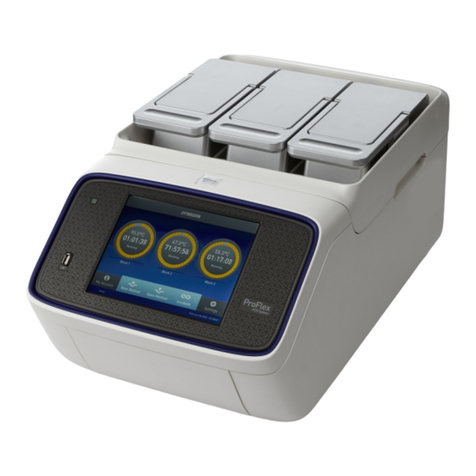
Thermo Scientific
Thermo Scientific Applied Biosystems ProFlex PCR System quick reference
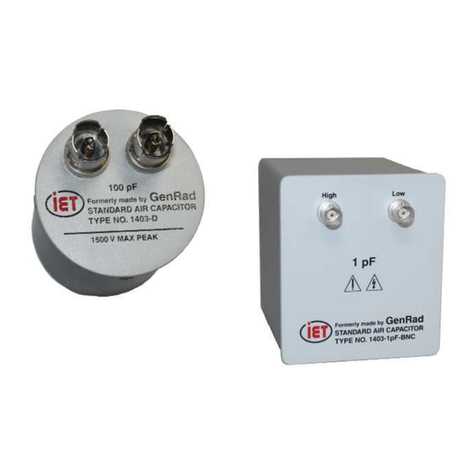
IET Labs
IET Labs GenRad 1403 Series Operation manual
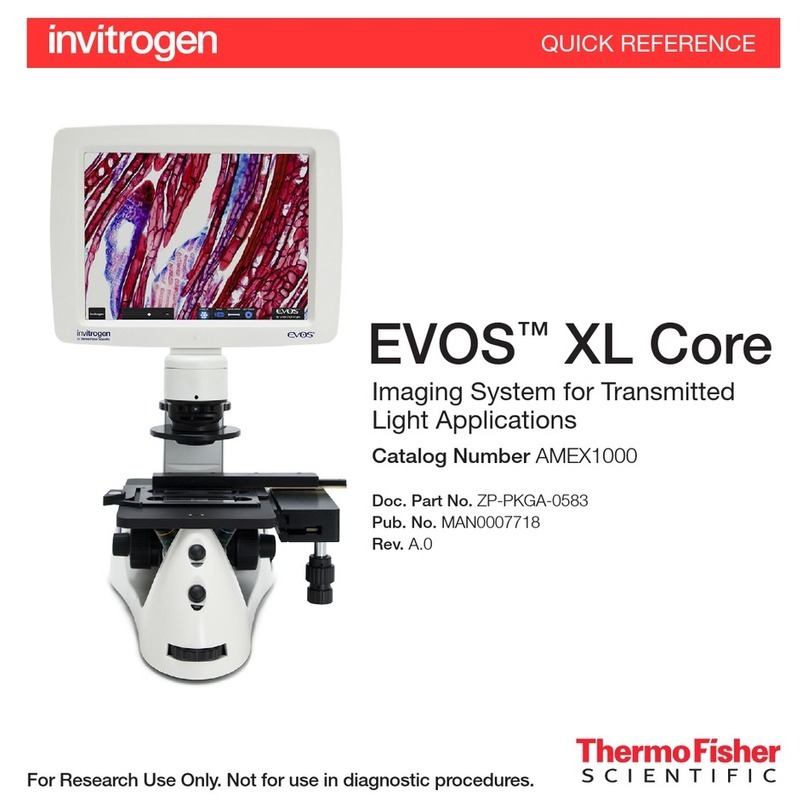
Thermo Scientific
Thermo Scientific invitrogen EVOS XL Core quick reference
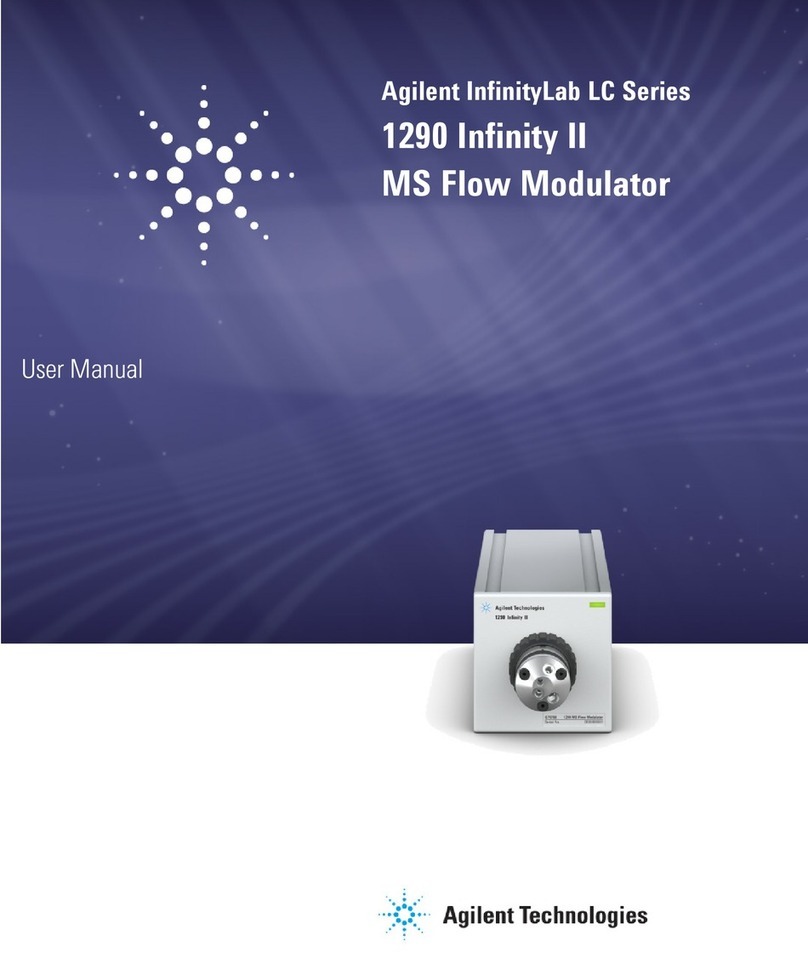
Agilent Technologies
Agilent Technologies 1290 Infinity II user manual

AB Sciex
AB Sciex 4000 QTRAP Hardware guide
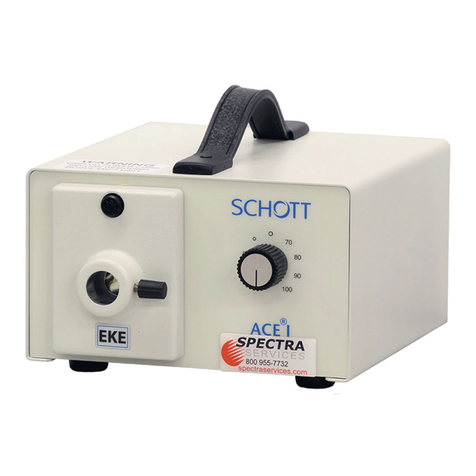
SCHOTT
SCHOTT ACE Series owner's manual
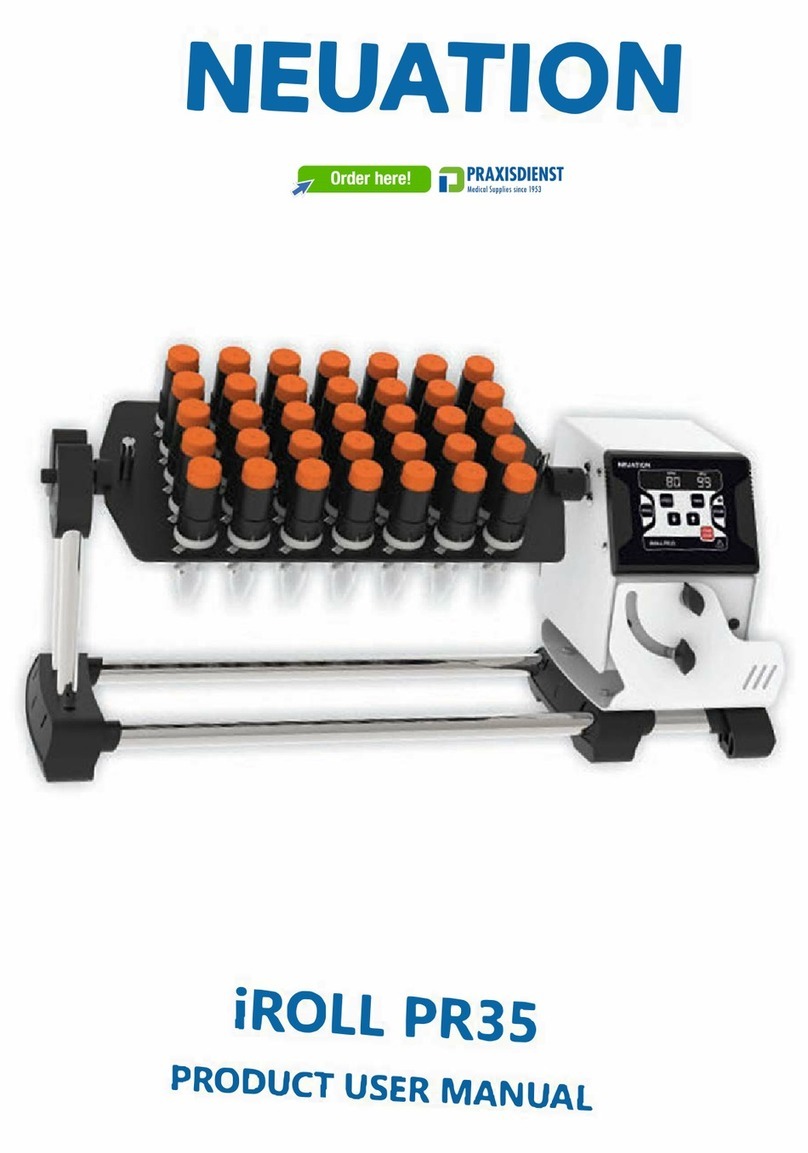
Neuation
Neuation iROLL PR35 Product user manual
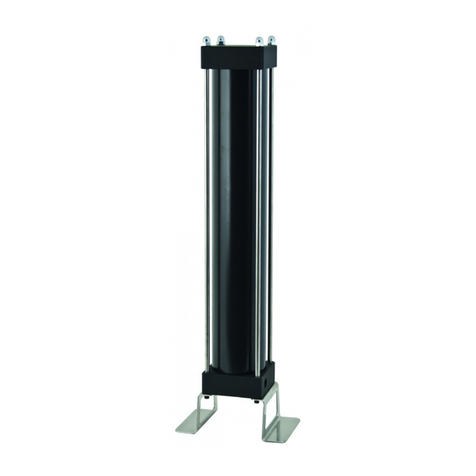
OMEGA AIR
OMEGA AIR TACm Series Installation and operating manual

Specac
Specac Golden Gate GS10500 Series user manual

Sourcetronic
Sourcetronic ST1778 user manual

BABYBELLE
BABYBELLE BBS05 Instructional manual
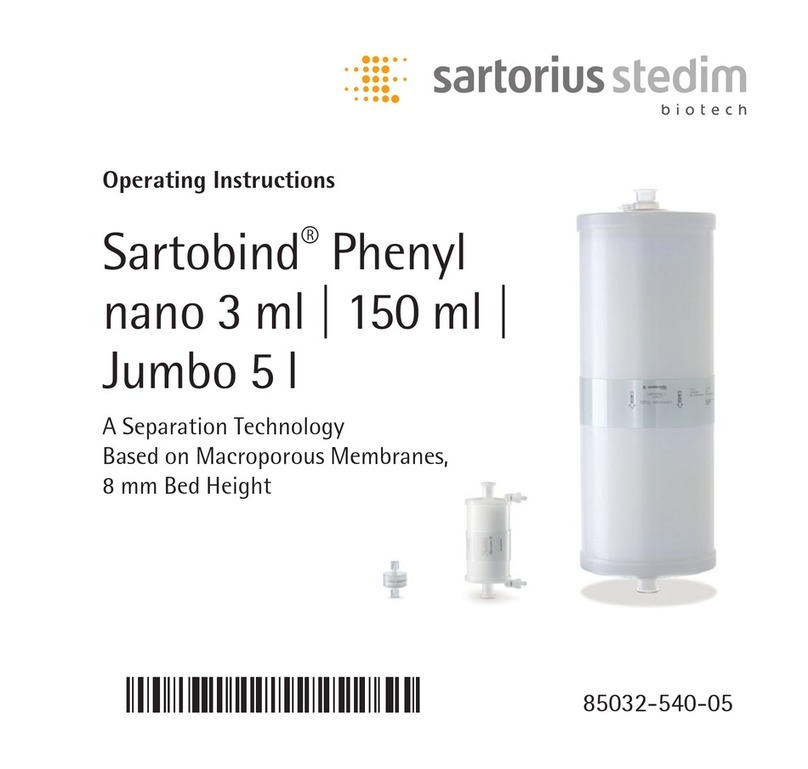
Sartorius stedim
Sartorius stedim Sartobind Phenyl nano 3 ml operating instructions


